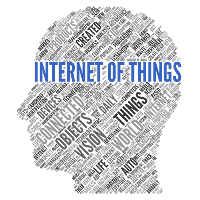 Though concerns persist about the cybersecurity risks attached to smart homes, connected vehicles, and other devices associated with the Internet of Things, a new report from Juniper Research projects continued investment, with the number of connected devices expected to rise over 285 percent to 38.5 billion by 2020.
Though concerns persist about the cybersecurity risks attached to smart homes, connected vehicles, and other devices associated with the Internet of Things, a new report from Juniper Research projects continued investment, with the number of connected devices expected to rise over 285 percent to 38.5 billion by 2020.
Currently, there are an estimated 13.4 billion connected devices, according to Juniper, which already doubly exceeds the number of humans on the planet. However, the future application of IoT technology may aim for commercial uses rather than personal, with businesses hoping to profit through more efficient business practices.
“While IoT ‘smart home’ based applications grab media headlines, it is the industrial and public services sector – such as retail, agriculture, smart buildings and smart grid applications – that will form the majority of the device base. This is due in no small part to a much stronger business case for these types of applications,” stated Juniper in its report, called “, The Internet of Things: Consumer, Industrial & Public Services 2015-2020.”
Growth will not come without several challenges, Juniper noted, as enterprises determine the best uses for IoT devices. Additionally, different standards for use between organizations can impede progress, but Juniper commented that
“We’re still at an early stage for IoT,” noted research author Steffen Sorrell. “Knowing what information to gather and how to integrate that into back office systems remains a huge challenge.”
The firm noted that Michelin and John Deere have evolved their business models to being service-based companies via IoT, rather than product vendors.
Juniper pointed out that the overall success of IoT depends on the interconnectivity of many individual moving parts.
“The IoT represents the combination of devices and software systems, connected via the Internet, that produce, receive and analyze data. These systems must have the aim of transcending traditional siloed ecosystems of electronic information in order to improve quality of life, efficiency, create value and reduce cost,” noted Sorrell. “The IoT, therefore, is as effective as the sum of its parts. Mere connections create data; however, this does not become information until it is gathered, analyzed and understood. The analytics back-end systems of the IoT will therefore form the backbone of its long-term success.”